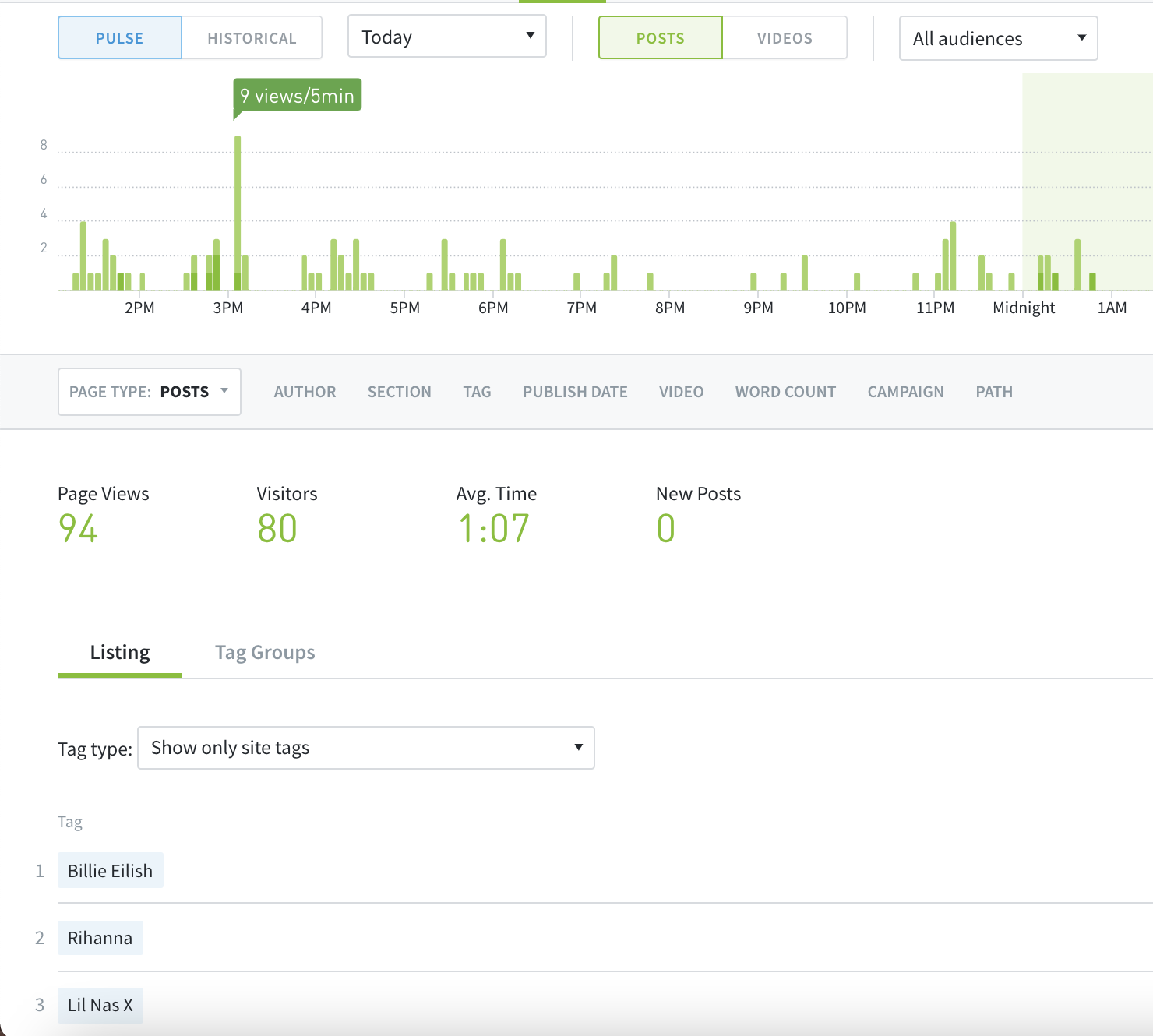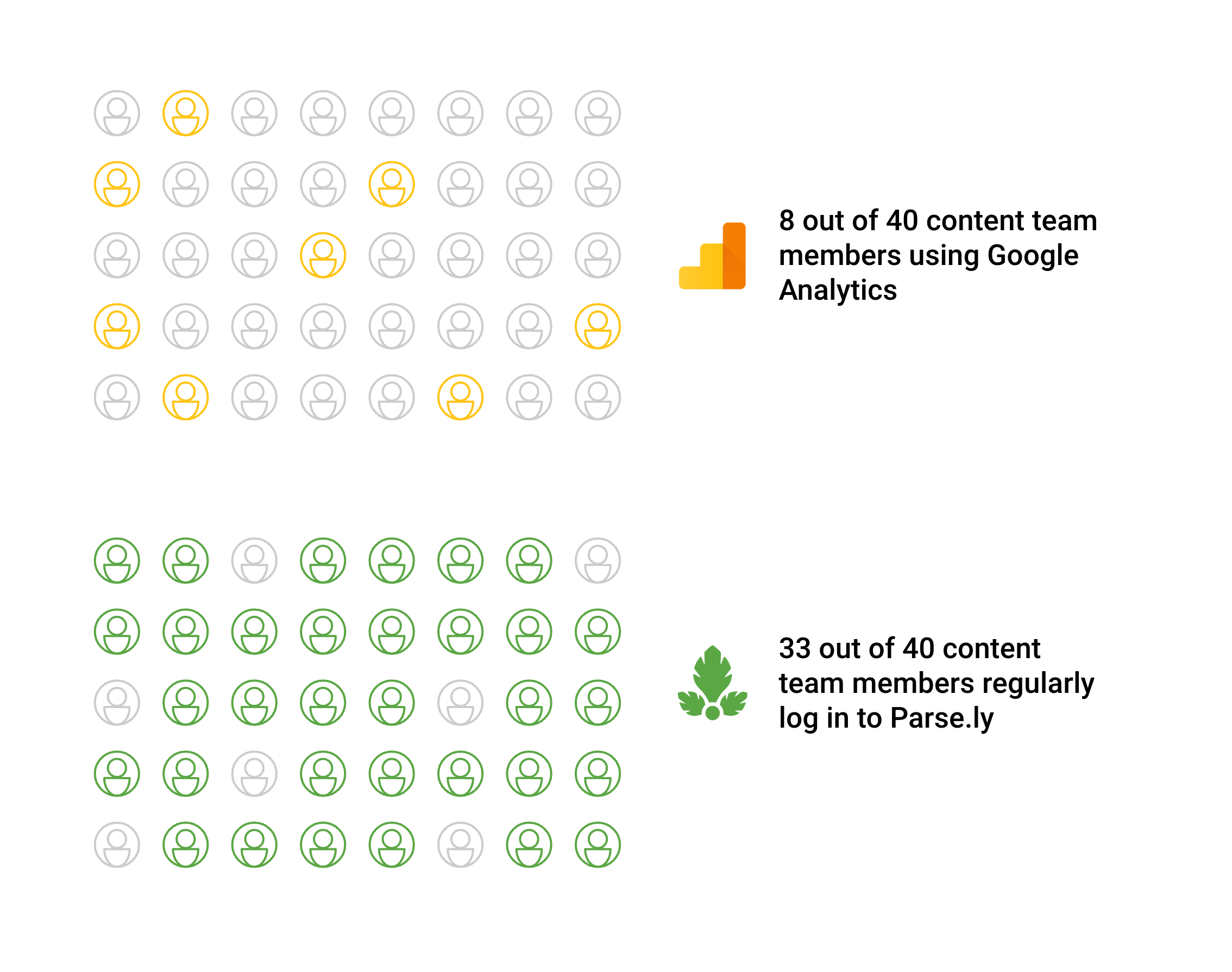Why Media Companies Need Real-Time Content Analysis

Real-time content analysis is essential for staying on top of rapidly evolving news and trends. It helps you see when an article is taking off and when there’s buzz around your stories.
Ultimately, real-time content analysis helps you make content decisions that need to happen right now with the most current data. No wonder the real-time “Overview” dashboard is the most viewed screen within the Parse.ly analytics platform.
Here’s the lowdown on real-time content analysis, so you can assess what’s happening now and decide what to do next.
Table of contents
- What is real-time content analysis?
- The benefits of real-time content analysis
- What to look for in a content analytics tool
- Power critical content decisions with real-time analytics
What is real-time content analysis?
Real-time content analysis is the process of measuring and evaluating the performance of an article or post as the data comes in. In other words, it’s the practice of monitoring how article performance metrics go up and down from moment to moment.
Analyzing content in real time, you can answer questions like:
- Which articles are trending right now?
- Which stories or topics are top-of-mind for my audience?
- What’s creating the most buzz on social media?

Real-time content analysis differs from historical content analysis, which shows trends over time. Historical content analysis is useful for more broader questions, like:
- Which topics do readers enjoy the most overall?
- How engaged has my audience been over the past month?
- How does seasonality affect my audience’s preferences for content?

Both types of analysis are essential for success for media companies. But while historical content analysis helps define your overarching content strategy and tactics, real-time analysis helps you react fast and accurately to breaking news events, exploding popular trends, and more.
The benefits of real-time content analysis
Analyzing content in the here and now helps you achieve the highest short-term impact from your articles. For one, it allows you to respond to audience feedback. For another, it enables you to put out new content on trending topics fast.
Improving article distribution
If you want an article to perform better, monitor in real time which promotional strategies are getting eyes on your articles and which aren’t.
Double-down on the promotional tactics that show promise, experiment with different promotional tactics, or show your article to more people in recommended article sections.
Or, if there’s an article that’s taking off on certain platforms, capitalize on its popularity by distributing it on other platforms like your newsletter, social media, or your homepage.
For example, say you published an article about making a career change. Analyzing the article’s initial performance, you learn it does well with millennials on Facebook. Consider boosting its visibility through paid ads on platforms that target that demographic. Or feature the article in an email newsletter segmented to your millennial readers.
Optimizing article performance
By analyzing content in real time, you can update articles to be more engaging.
Maybe an article title isn’t getting clicks. Update it to be more punchy.
Say certain photos or language is getting negative responses. Swap in other images or copy.
Perhaps readers are clicking through but not sticking around. Try better aligning the article title to the content, so readers get what they’re expecting.
Participating in conversations with your readers
Engaging with your readers builds deeper relationships with them and increases their loyalty. But you shouldn’t wait to respond to them. Your readers are talking now. If you wait a week or even a day to engage with them, you’ve missed the window of opportunity.
Complaints around article tone or misrepresented facts should be addressed right away. Tracking the buzz around a piece of content can help you put out any fires quickly.
Feedback can be positive, too. A reader might be interested in learning more after reading an article. Or they might have praise for the unique angle a writer took. Interacting with readers who are having great experiences makes them feel heard and valued—even if it’s just in the form of a tweet that shows you’re listening.
Identifying trends that inform content creation
With real-time content analysis, you can see what topics are hot on your website right now and respond to emerging trends fast.
By determining what people care about and want to know more about, you can write and publish relevant content quickly or promote other relevant articles.
Say you write a round-up of the best-dressed celebrities at the Grammys and notice a sudden spike in audience engagement on content about Billie Eilish. While audience interest is hot, consider writing a dedicated article about the team behind the design of Billie Eilish’s Grammys dress.

What to look for in a content analytics tool
General analytics tools won’t cut it for media companies. Because of their complexity and high barrier-to-entry, they typically don’t get used by content teams to guide their content decisions.
The right analytics tool for a media company is one designed specifically for the needs and use cases of content teams. For journalists, editors, and writers, that means easy, fast access to real-time data, robust data analysis, and audience segmentation.
Real-time data
This should be at the top of your analytics solution feature list. But not every content analytics tool can give you what you need to succeed.
The right analytics tool will be able to track real time article performance, social shares, conversions, and data on topics, authors, and article tags. Altogether, these will give you the context you need to act on insights you glean.
Robust data analysis
You need to source metrics that are actually useful and be able to filter by different content types.
Traditional metrics like bounce rate are outdated and misleading. Opt for a tool that provides a more accurate picture of audience engagement with metrics like engaged time and conversions.
Furthermore, you need to be able to analyze content by:
- Type (whether it’s text, audio, or video)
- Referring channel (like social media, Apple News, and other websites)
- Device and browser
- Any tags you have set up for different categories of content.
Audience segmentation
Segmenting your audience and pairing it with your performance metrics means you can serve each audience segment effectively.
Every media company will have an array of audience subsets that are more interested in certain things than others.
For example, say you’re a fashion publication analyzing engagement for your shoe round-up pieces. You might find that an article on cowboy boots is leading the way. But you might also see that there’s a small cohort of readers in New England that aren’t engaging with that content but have been reading up on winter fashion. So, it might be a good idea to do a write-up of warm winter boots for them.
Low learning curve
If your content analytics tool isn’t intuitive and easy to use, fewer people at your organization will use it.
Finding data-driven insights quickly, without navigating confusing menus and complex configurations, is essential, especially for journalists and editors on deadline.

Power critical content decisions with Parse.ly real-time analytics
Unlike general web analytics tools, Parse.ly, part of the WordPress VIP content management platform, helps content teams easily access content performance data from their site, as well as search engines, social media sites, mobile apps, and platforms like Apple News and SmartNews.
See real-time and historical data in a central dashboard for content across all your platforms and channels. Sort content and filter by type, author, source, and more. Segment your audience to understand how different groups of people engage with your content. And analyze your content with more than 30 unique attention metrics that actually matter, like engaged time (absent from many analytics tools) and social shares—so you can accurately determine the success of each article.
Want to learn more?